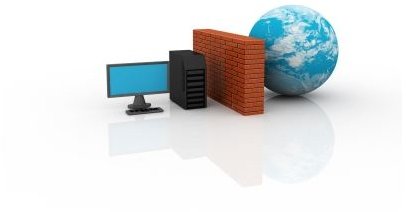Internet Data and Network Security Issues
Internet Data Security Issues
The Internet provides insecure communications, so Internet privacy is threatened. Presently, there are still many ongoing Internet data security concerns. For example, privacy is a risk when it concerns transactions or transmissions of personal information sent online and to an unsecure environment. There are potential privacy risks and Internet data leaks each time data is sent on the Web, whether it is unencrypted or sent to a website that is untrustworthy.
A secure network (see image) needs a firewall when Internet data is being transmitted back-and-forth from one user to another. To securely transfer files between computers, use Core FTP, which is a free mini SFTP server. And, using SSL will define the format used to transmit data.
In addition to Internet data security privacy issues, there are also concerns with aggregate data and accepting Internet cookies. This ordeal can track your past, present and future movements on the Web. Again, computer users are feeling insecure and unsafe on the Internet. Note: Internet cookies are referred as cyber-snooping.
Advice: To help keep data privacy under control use privacy software. And, to help keep information secure use Websense’s Web Security Gateway to consolidate Web, e-mail, and data security into one architecture. Computer users may also want to consider using an online storage service for securing their information as well. Furthermore, be sure to control your privacy settings for untrustworthy Web sites (e.g., Facebook).
Network Security Issues
Just like the Internet, there are also network security issues and concerns. The information sent over the network and into cyberspace has a certain value, right? Since the Internet is the primary means for data being transmitted and received, it is worth pointing out that network security issues are critical to every information infrastructure. As information moves toward its destination user(s), it may be subject to theft, tampering, or disruption; therefore, the need to protect information in transit over the Internet is crucial.
For more network security issues, see the Bright Hub article: Learn About These Important Network Security Issues.
Advice: Consider deploying a virtual private network (VPN), which can help provide secure connectivity from one computer user to another. Also, ensure all data in transit is secure by using the secure sockets layer (SSL) protocol. Both options involve the use of cryptography to encrypt data. Furthermore, be sure to receive awareness training on network security because it is relevant to everyone’s use of computers on networks.
Ways to Secure Broadcasting Networked Data
One way to secure broadcast data is to disable the automatic SSID broadcast (warning about disabling the SSID) from within the computer. Another way is to use a secure IP broadcast using an encryption key. Both options can help provide a secure communication channel over the Internet.
Note: The network data services by Verizon, for example, provides Digital Data Services that can ensure reliable and secure communications (both for high-quality voice and data transmission). Also, EasyLink services provides secure messaging as well as allows organizations to manage file transfers and data exchanges safely and securely.
Image Credit: Secure Network - Image Creator (jscreationzs)
References
Internet Security, Privacy Protection Software: https://www.safestware.com/
Introduction to Network Security: https://www.interhack.net/pubs/network-security/
